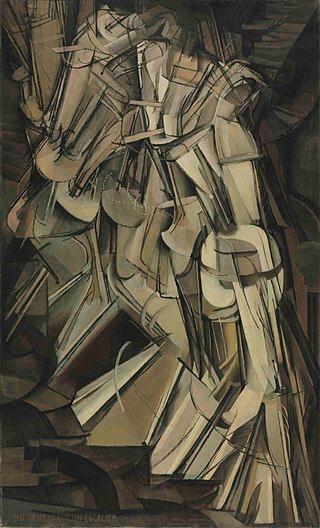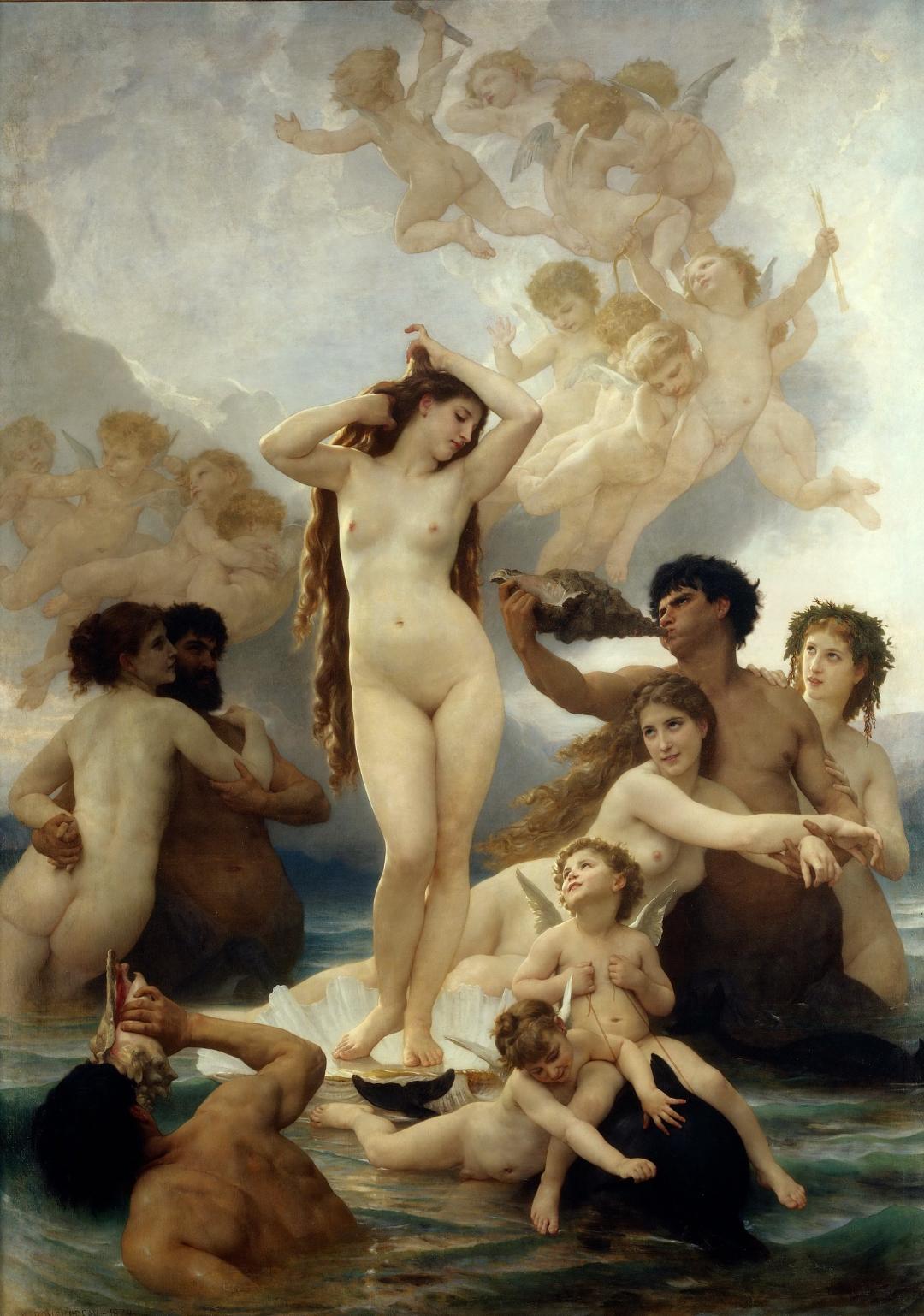I would like to draw your attention to two very different works of art.
The first is Marcel Duchamp’s Nude Descending a Staircase No. 2.

The second is William Adolphe Bouguereau’s Birth of Venus.

Before I go any further, I should say that, though I strongly dislike Modernism in all its forms, not least in art, and Duchamp’s work makes no appeal to me, my point is not actually to criticize the painting itself. I am prepared to admit that, as far as it goes, it may be a very good piece of art. It may show real talent and ingenuity, and people may derive legitimate pleasure from it. My point is something rather different.
On immediate viewing, there is a lot that could be said comparing and contrasting these two. The most obvious, to me, the fact that one of them needs a title to convey what we’re even supposed to be looking at and the other doesn’t. I say that rather sarcastically, but I mean it as a simple statement of fact; no one seeing Nude the first time without knowing the title could discern what, if anything, the subject was meant to be (quite a few who see it with the title can’t make heads or tails of it either). He might get a sense of descent, or possibly of a vaguely human form, but that’s it.
Birth of Venus, on the other hand, would be immediately recognizable to anyone with a passing knowledge of Classical mythology, and even lacking that, at the absolute minimum you would get the basic idea of “a beautiful and important woman comes out of the sea amid celebrations.”
In other words, one needs to be explained, the other doesn’t.
Now, there’s a distinction to be made here. There are many great works of art in different mediums that requires an explanation in order to even be comprehended enough to be appreciated. For instance, the plays of Shakespeare may not make an immediate appeal to a modern reader if he’s unfamiliar with the language or has trouble putting himself in the mindset of the time. Likewise something like Kabuki Theater is often difficult for foreign audiences to comprehend.
However, this is not the same kind of thing as what we’re discussing. The barrier to Shakespeare, or Homer, or Kabuki lies in the fact that there is a difference in language and culture between the creator and the audience. The audience doesn’t understand because they lack certain knowledge, experience, or points of reference that the author could assume in his own audience. That is, the need to explain them comes from something external to the work itself. It is not essentially different from a merely linguistic barrier.
Now, Duchamp’s work, and others like it, is not in this category. Nude is difficult to understand because the artist purposefully made it to be so. It requires an explanation because of itself it does not convey its subject to the average viewer.
This, it seems to me, is a common feature of a lot of modernist art: at best it suggests rather than conveys its subject. Or it doesn’t even do that, but simply presents something incomprehensible that may possibly have made sense to the artist and invites the audience to impose whatever he happens to be feeling at the moment upon it (see Mr. Pollock). Some may find that appealing or even discover genuine value in it: I’m not going to dispute that point.
However, there is something else to be said on the topic of needing an explanation, and it is this; once you have explained Nude Descending a Staircase, you have reached the end of it. It is an abstract representation of a nude model walking down a short staircase, with the moments of progression laid on top of one another. And that’s it. It may be a very cleverly done, very ingenious, very skilled depiction, but there’s nothing else there except the technique. You have thoroughly explained the content of Duchamp’s piece.
The same cannot be said of The Birth of Venus. You can ‘explain’ it by saying that it is a depiction of the newborn goddess of love and beauty rising out of the sea, while cherubs, nymphs, and fawns sport about her in celebration, but that doesn’t begin to cover the content of the painting. You could go on to describe the figures and what they represent. You could consider interpretations of their positions relative both to Venus and to each other. You could discuss the swarm of cherubs, with Cupid triumphant in the forefront with his bow and arrow, and what is possibly meant to be Psyche beside him. You could consider Venus herself, the proud carriage of her head, the expressive pose of her body, the fact that she isn’t looking at any of the other figures, yet is unmistakably aware of them.
All of this is there; it’s in the painting. You can’t say that the expression on the face of Venus is subjective or imposed by the viewer, because it’s very clearly rendered thus and not thus, but what that expression conveys about the character and attitude of the goddess, much less what that may say about the whole topic of love and beauty, is not a simple question with a clear answer, and the viewer’s reaction may depend in large part on his own experience and understanding of the world.
Note that in this summary we haven’t even approached mere technical questions, nor the myth itself, nor how the painting compares with other depictions of the same scene.
In short, you can’t ‘explain’ the content of Monsieur Bouguereau’s painting in the same way you can explain Nude Descending a Staircase, because M. Bouguereau’s painting contains much more than just technique (which is ironic given the usual narrative regarding his work as “passionless and purely technical”). Even my earlier absolute minimum description of M. Bouguereau’s piece conveys more complex ideas and is more replete with suggestion than the complete explanation of Duchamp’s (e.g. “an important woman” versus “a naked female figure”). The ‘painting’ part of the work is the beginning for M. Bouguereau; it is the end for Duchamp.
I bring all this up because I think it illustrates a key difference between the Traditional and Modernist mindsets. The Traditionalist looks outward, seeking something higher than himself to contemplate; the Modernist looks inward, seeking to assert his own will upon the world. The Traditionalist sees the structure of technical skill and effort as the medium to greater heights of creative expression; the Modernist sees any and all structure as something false and restrictive to be overcome. The Traditionalist sees himself relative to something higher, or at least other than himself; the Modernist sees everything as relative to himself.
The result is that the Modernist’s work admits of an easy explanation. Behind its veneer of complexity and defied conventions, it is limited, narrow, and, well, simplistic. The Traditionalist’s work, in its rigid technique and clarity of subject, goes on and on, applicable in a thousand ways, drawing a thousand connected interpretations and ideas, conveying a wealth of emotions. In the end, the defining feature of Modernism, it seems to me, is not so much that its works are ugly, or show poor craftsmanship, or lack meaning. That’s all as may be. Rather it is that, compared to what it has replaced, it is always so very petty.

